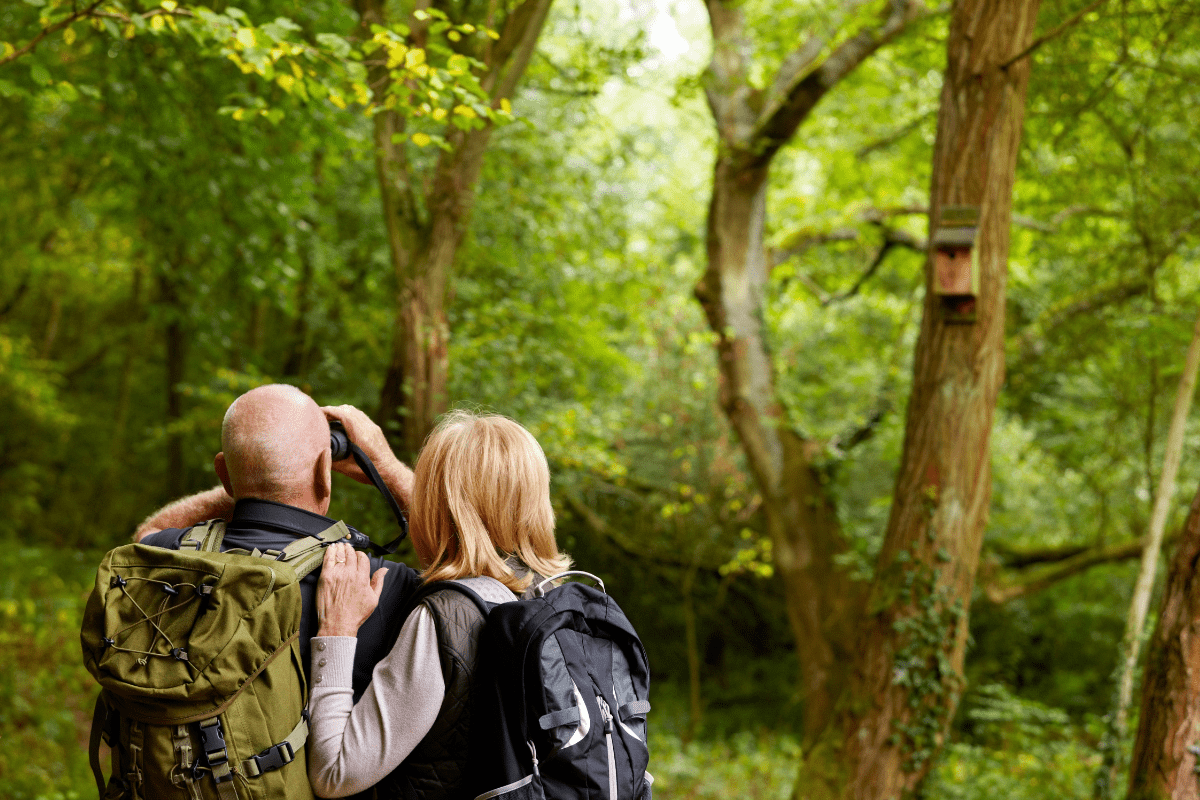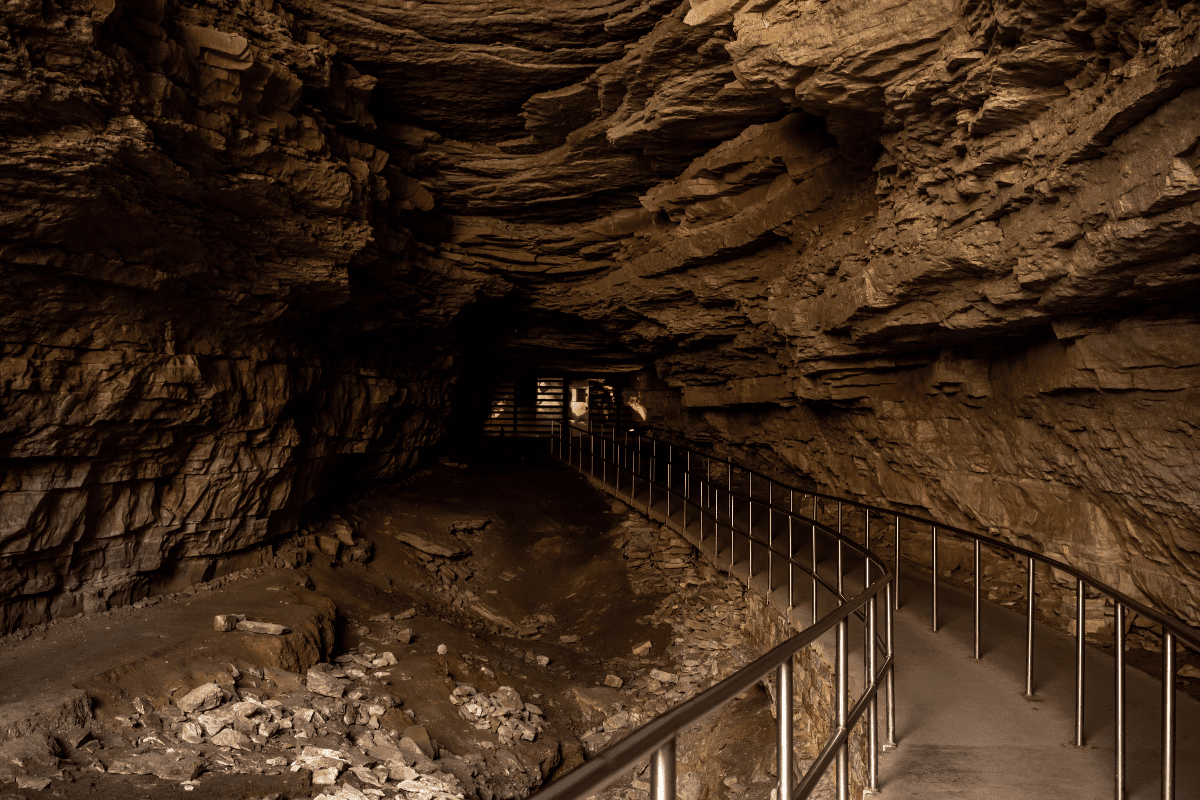From bugling elk in misty mountain valleys to bald eagles soaring over massive lakes, Kentucky offers some of the most rewarding wildlife encounters in the eastern United States. The Bluegrass State's diverse landscapes create perfect habitats for creatures both common and rare, making it a year-round destination for nature lovers of all experience levels.
Getting your bearings in the bluegrass
Kentucky's wildlife viewing opportunities spread across three distinct regions, each with its own character and resident creatures. The eastern mountains harbor the state's famous elk herds and recovering black bear populations. Western wetlands transform into waterfowl paradise each winter, while the central Bluegrass region offers surprisingly diverse viewing within easy reach of major cities.
The best part? You don't need to be a seasoned naturalist to enjoy Kentucky's wildlife. Whether you're hoping to photograph your first bald eagle or simply want to hear wild turkeys gobbling on a spring morning, success comes down to knowing where to go and when to visit.
Understanding Kentucky's conservation comeback
Today's abundance reflects decades of conservation work that brought species back from the brink. The elk restoration program stands as Kentucky's greatest wildlife success story. Between 1997 and 2002, wildlife officials relocated 1,550 elk from western states to eastern Kentucky. That founding population has exploded to over 13,000 animals across 16 counties, creating the largest elk herd east of the Rocky Mountains.
Black bears are staging their own comeback, with populations growing 20% annually in some eastern counties. These success stories generate serious economic benefits too. Wildlife watching contributes $1.3 billion annually to Kentucky's economy, with elk viewing alone bringing $3.5 million to rural mountain communities.
Eastern mountains: where elk rule the ridges
Eastern Kentucky's rugged terrain creates prime habitat for the state's most sought-after wildlife viewing experiences. The mountains echo with elk bugles each fall, black bears amble through oak forests, and common ravens soar above some of Kentucky's highest peaks.
Prime elk viewing locations
Nothing quite prepares you for your first wild elk encounter. These massive animals, weighing up to 700 pounds, seem almost prehistoric as they graze in mountain meadows. The South Fork Elk View in Breathitt County offers one of the most reliable viewing experiences via a scenic 16-mile drive from Jackson. Early morning and late afternoon bring the best chances of spotting herds.
For a slightly different experience, head to the Jewel Ridge Viewing Area near Hazard. This spot tends to attract smaller groups, but the mountain backdrop makes for spectacular photography. During winter months (December through February), elk congregate in groups of up to 100 animals near roadsides where they're easier to spot through bare trees.
Kingdom Come State Park
Perched at 2,700 feet elevation, Kingdom Come State Park claims the title of Kentucky's highest state park. The elevation isn't just a bragging right – it creates unique habitat that supports species you won't find in Kentucky's lowlands. The park protects one of the state's few nesting populations of common ravens, whose croaking calls echo off the sandstone cliffs.
The park's 14 hiking trails totaling over 16 miles offer excellent chances for black bear sightings, especially during fall when bears feast on acorns and prepare for winter. Pro tip: bears are surprisingly quiet walkers, so make noise on trails to avoid surprise encounters. A startled bear is nobody's friend.
Daniel Boone National Forest
Spanning 708,000 acres across 21 counties, Daniel Boone National Forest serves as the backbone of eastern Kentucky's wildlife habitat. The famous Red River Gorge area within the forest creates a biogeographical mixing zone where northern and southern species overlap. You might spot a northern saw-whet owl and a southern flying squirrel on the same hike – talk about diversity.
The forest supports over 200 bird species, from tiny ruby-throated hummingbirds to magnificent pileated woodpeckers that sound like jackhammers on dead trees. White-tailed deer browse forest edges at dawn and dusk, while wild turkeys strut through oak groves in spring.
Western wetlands: waterfowl wonderland
Western Kentucky transforms each winter as the Mississippi Flyway funnels hundreds of thousands of birds into the region's wetlands and lakes. The sheer numbers can overwhelm first-time visitors – imagine 40,000 geese taking flight at once, their calls creating a wall of sound that vibrates in your chest.
Land Between the Lakes National Recreation Area
The 170,000-acre Land Between the Lakes National Recreation Area sits between Kentucky Lake and Lake Barkley, creating perfect habitat for wintering eagles. Each winter, approximately 140 bald eagles join the 30 pairs that nest here year-round.
Eagle watching peaks in January and February when northern birds escape frozen lakes up north. The eagles concentrate near the dams where turbulent water prevents freezing and churns up fish. On cold mornings, you might count 20 or more eagles perched in waterside trees, waiting for thermals to develop. Guided van tours and lake cruises offer close encounters without disturbing these magnificent raptors.
Don't overlook the Honker Lake area, where a 4.5-mile trail circles a Depression-era waterfowl impoundment. Beaver dams and lodges demonstrate these industrious engineers at work, while great blue herons stand motionless in the shallows, waiting for unwary fish.
Ballard Wildlife Management Area
If waterfowl numbers impress you, Ballard Wildlife Management Area will blow your mind. This 8,200-acre chunk of Mississippi River floodplain hosts up to 40,000 geese and 30,000 ducks annually. The cacophony during peak migration sounds like nature's version of a football stadium on game day.
A two-mile wildlife viewing loop stays open year-round, though winter brings the most spectacular shows. The photography blind at Goose Trap Slough puts you at eye level with thousands of waterfowl – bring earplugs if you're sensitive to noise. Seriously.
Sloughs Wildlife Management Area
Often overshadowed by its famous neighbor Ballard, Sloughs WMA protects 13,000 acres of prime wetland habitat. Sandhill cranes stop here during migration, their prehistoric calls carrying for miles across the marshes. The area also supports healthy populations of river otters, though these playful mammals require patience to spot.
Central Kentucky: civilization meets wild
Central Kentucky proves you don't need to drive hours into the wilderness for quality wildlife viewing. The region's mix of forests, grasslands, and urban green spaces supports surprising diversity within easy reach of Louisville and Lexington.
Bernheim Arboretum and Research Forest
Just 25 minutes south of Louisville, Bernheim protects over 16,000 acres of native Kentucky habitat. The 40 miles of trails range from easy strolls to challenging hikes, accommodating every fitness level. Over 170 bird species have been recorded here, from tiny golden-crowned kinglets to broad-winged hawks.
The accessible Canopy Tree Walk elevates visitors into the forest crown, offering a bird's-eye view of wildlife activity. Kids love spotting squirrel nests and woodpecker holes from this unique perspective. White-tailed deer graze the meadows at dusk, while wild turkeys parade through in small flocks.
Raven Run Nature Sanctuary
Lexington's Raven Run Nature Sanctuary packs remarkable diversity into 734 acres along the Kentucky River Palisades. The limestone cliffs create unique microclimates that support both prairie plants and mountain species. Ten miles of trails explore ten distinct habitat types – it's like a ecology textbook come to life.
Coyotes have become common here, though you're more likely to hear their yips and howls than see them. Red-tailed hawks nest in the tall sycamores along the river, while great horned owls claim the deeper forest. Spring wildflower blooms attract clouds of butterflies, including monarchs laying eggs on milkweed plants.
Salato Wildlife Education Center
Sometimes you want guaranteed wildlife sightings, especially when introducing kids to nature. The Salato Wildlife Education Center in Frankfort delivers with over 40 native Kentucky species in naturalistic exhibits. Black bears lumber around their spacious enclosure, bald eagles perch majestically, and bobcats demonstrate why they're called ghosts of the forest.
The center attracts 40,000 visitors annually and serves as an excellent primer before heading into the wild. Interactive programs teach wildlife identification and behavior, giving you skills to use on future adventures. Plus, the indoor exhibits provide wildlife viewing even during Kentucky's unpredictable weather.
Seasonal wildlife calendar
Kentucky's wildlife activity shifts dramatically with the seasons. Understanding these patterns transforms good trips into unforgettable experiences.
Spring awakening (March-May)
Spring migration turns Kentucky into a birding paradise. Over 30 warbler species pass through from mid-April through May, dressed in breeding plumage that makes them easier to identify. The dawn chorus peaks between 5:30 and 7:30 AM – set that alarm clock or miss the concert.
Wild turkey gobbling reaches fever pitch as toms strut for hens. Their elaborate displays look ridiculous but serve serious purposes. Wildflowers carpet the forest floor before trees leaf out, attracting native pollinators and providing perfect photography subjects.
Summer abundance (June-August)
Baby animals appear everywhere in summer. White-tailed deer fawns take their first wobbly steps in June, while young raccoons follow their mothers on nighttime raids. Ruby-throated hummingbirds zoom between cardinal flowers and feeders, their wings beating 53 times per second.
Reptiles and amphibians thrive in summer heat. Box turtles lumber across trails, five-lined skinks bask on logs, and gray treefrogs call from pond edges. Just remember – Kentucky hosts four venomous snake species, so watch where you step.
Fall spectacle (September-November)
Two words: elk bugling. From mid-September through mid-October, bull elk announce their presence with haunting calls that send shivers down your spine. The sound carries for miles through mountain valleys, especially on crisp mornings when sound travels best.
Fall also brings raptor migration along mountain ridges. Broad-winged hawks stream south in groups called "kettles," with single-day counts sometimes exceeding 1,000 birds. Pack a lunch and enjoy the aerial show.
Winter concentration (December-February)
Winter transforms Kentucky into eagle country. Bald eagles concentrate around open water, creating viewing opportunities impossible during summer when they spread across vast territories. Waterfowl numbers peak as ducks and geese crowd into ice-free areas.
Snow occasionally blankets the landscape, making animal tracking easier. Look for distinctive prints: deer hearts, turkey scratches, and the hand-like tracks of raccoons. Elk gather near roadsides where wind blows snow off grasses, offering some of the year's best viewing.
Essential viewing techniques
Success in wildlife viewing comes down to preparation, patience, and respect for wild animals. Here's what you need to know:
Optics make the difference
Quality binoculars rank as your most important tool. The 8×42 or 10×42 models provide ideal balance between magnification and field of view. Weather-resistant construction matters in Kentucky's humid climate, while good eye relief reduces fatigue during extended viewing sessions.
For photography, long telephoto lenses (400-600mm) maintain safe distances while capturing frame-filling shots. Start with these camera settings and adjust as needed:
- Shutter speed: 1/800 second minimum
- Aperture: f/5.6
- ISO: 400-800
- Continuous autofocus mode
- High-speed burst for action
Ethical wildlife viewing
The "rule of thumb" provides a quick distance check – if you can cover the animal with your thumb at arm's length, you're generally far enough away. If an animal changes behavior due to your presence, back off immediately. Stressed wildlife wastes precious energy avoiding humans instead of feeding or resting.
Never feed wildlife. It's illegal in Kentucky and creates dangerous situations for both animals and humans. Fed animals lose their natural fear, leading to aggressive behavior and eventual removal or destruction.
Sound identification skills
Learning common calls dramatically improves detection rates. Start with easy ones:
- Cardinal: "birdy-birdy-birdy"
- Barred owl: "who-cooks-for-you"
- Wild turkey: "gobble-gobble"
- Red-winged blackbird: "conk-la-ree"
Apps like Merlin Bird ID provide instant sound identification, while eBird shows recent sightings in specific locations. Technology makes wildlife identification easier than ever.
Safety considerations
Kentucky's wildlife rarely poses danger, but preparation prevents problems. Here's how to stay safe:
Black bear encounters
Kentucky's black bears avoid humans but sometimes cross paths with hikers. Make noise while hiking to avoid surprises. If you encounter a bear:
- Don't run (triggers chase instinct)
- Back away slowly while facing the bear
- Speak in calm, firm voice
- Make yourself appear large
- Fight back if attacked (unlike grizzly protocol)
Venomous snake awareness
Kentucky hosts four venomous species:
- Copperhead (most common)
- Timber rattlesnake (eastern mountains)
- Cottonmouth (western Kentucky wetlands)
- Pygmy rattlesnake (rare)
Learn their identifying features: triangular heads, vertical pupils, and heat-sensing pits between eyes and nostrils. Wear boots and long pants in snake habitat, stay on trails, and watch hand placement when climbing.
Tick-borne disease prevention
Ticks remain active year-round in Kentucky, carrying diseases like Lyme disease and Rocky Mountain spotted fever. Prevention beats treatment:
- Use DEET-based repellents
- Treat clothing with permethrin
- Tuck pants into socks
- Perform thorough tick checks
- Shower within two hours of outdoor activity
Hidden gems worth finding
Beyond famous destinations, Kentucky harbors lesser-known wildlife viewing treasures. The Tennessee River Wildlife Refuge supports over 300 bird species across 65 miles of shoreline. Four observation decks and two hiking trails provide comfortable viewing without crowds.
Carter Caves State Resort Park offers exceptional wildlife viewing with more solitude than popular destinations. The park's 20-plus caves shelter various bat species, while surrounding forests support typical Appalachian wildlife including black bears and bobcats.
Urban wildlife thrives at locations like Louisville's Riverfront Park and Lexington's McConnell Springs. These green spaces prove excellent wildlife viewing doesn't always require long drives. McConnell Springs' 26 acres preserve the natural springs that attracted prehistoric megafauna and later became Lexington's founding site.
Planning your Kentucky wildlife adventure
Ready to explore Kentucky's wild side? Success starts with smart planning tailored to your interests and abilities.
Choose destinations based on target species and seasonal timing. Visit eastern mountains for winter elk viewing, western wetlands for fall and winter waterfowl, or central Kentucky for spring songbird migration. Download relevant apps before leaving cell service areas, and always check regulations for seasonal closures or managed hunts.
Weather significantly impacts both wildlife activity and viewer comfort. Clear, calm mornings typically offer the best conditions year-round. After cold fronts, bird migration intensifies. The first warm days of spring trigger amphibian breeding congregations. Monitor forecasts and pack layers – Kentucky weather changes quickly.
Consider your group's abilities when selecting locations. Families with young children might prefer Bernheim Forest's easy trails or Salato Wildlife Education Center's guaranteed sightings. More adventurous viewers can explore Daniel Boone National Forest's backcountry or join guided dawn elk tours.
Kentucky's remarkable wildlife populations offer viewing opportunities rivaling anywhere in North America. From haunting elk bugles echoing through mist-shrouded mountains to eagles soaring above massive lakes, the Bluegrass State provides unforgettable encounters with wild creatures. By combining knowledge of wildlife behavior, ethical viewing practices, and careful planning, observers of all experience levels can discover Kentucky's natural treasures while contributing to their conservation for future generations.





